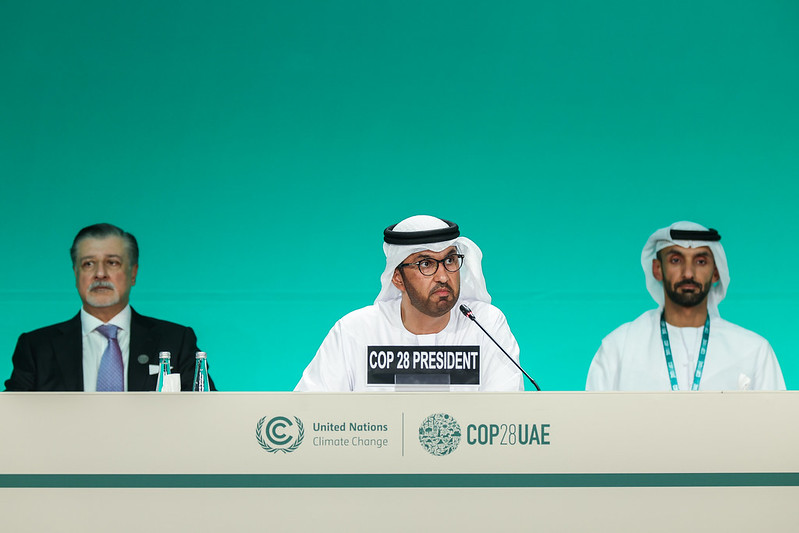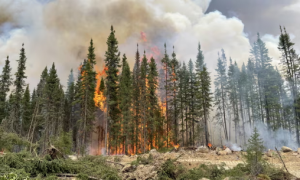It’s that time of year in Albany when a wave of bills sweeps ashore in the New York State Legislature, among them a number of critical climate and energy transition measures.
The big question on the minds of climate and environmental activists and their legislative allies is pretty straightforward: to what extent is Governor Kathy Hochul committed to fulfilling not just the letter but the spirit of the state’s 2019 Climate Leadership and Community Protection Act (CLCPA)?

Assemblymember Anna Kelles speaking at a NY Renews rally in January. Photo courtesy of NY Renews.
Uncertainty and Anziety
Close on the heels of this question is a related issue: the State Climate Action Council has developed a substantive, thoughtful roadmap for meeting the ambitious goals of the CLCPA, but it remains unclear how energetically the governor intends to pursue it.
Feeding this sense of uncertainty are the challenges facing the rollout of utility-scale renewable energy projects in New York. As Marie French points out in a recent article, recent setbacks in developing industrial wind and solar have raised serious doubts about the state’s ability to meet the demands of the Climate Law, which requires that 70 percent of New York’s power come from renewable sources by 2030.
Finding a Solution
At the same time, extreme weather events attributable to climate change have been escalating, creating a palpable sense of urgency about the need to find a solution. As Raya Salter, a member of the Climate Action Council and founder of the Energy Justice Law and Policy Center, puts it, “The stakes are higher than ever so the governor needs to be willing to step out and make sure that we fully implement the CLCPA.”
There is certainly no shortage of suggestions about how to do this. One of the boldest set of proposals before the legislators is the Climate, Jobs, and Justice Package (CJJP) advanced by NY Renews, a coalition made up of over 370 environmental, justice, faith, labor, and community groups, including TCCPI.
The CJJP has three main components: 1) fully fund the CLCPA so that it can achieve its objectives; 2) build renewable energy for all and create green union jobs; and 3) hold polluters accountable and ensure everyone pays their fair share in taxes. Here are the details about how this would be accomplished:
- The People’s Climate Justice Budget is a $1 billion spending plan that outlines critical climate and environmental justice programs that would constitute a downpayment on the more than $10 billion a year the state estimates is necessary to address the climate crisis. It builds on the creation of the Climate Action Fund (CAF) in 2023, seizing a historic opportunity to fund projects across the state.
- The NY HEAT (Home Energy Affordable Transition) Act would eliminate subsidies for new gas hookups (the “100-foot rule”), enable neighborhood scale building decarbonization by eliminating the “obligation to serve” gas, and ensure that no household pays more than 6% of its income for energy. The plan would also ban the construction of any new gas plants in areas where they do not already exist after September 30, 2023.
- The Just Energy Transition Act provides a plan to guide the replacement and redevelopment of at least 4 GW of New York State’s fossil fuel facilities by 2030. It lays out a clear direction for proceeding with the transition off fossil fuels in accordance with the CLCPA requirements. Converting these facilities to renewable energy as soon as possible will generate climate and economic benefits as well as public health benefits.
- The Climate Change Superfund Act holds major oil companies, the state’s worst climate polluters, accountable for the harm they’ve inflicted on New York between 2000 and 2018. It would require companies that have contributed significantly to the buildup of greenhouse gases to bear a share of the costs of infrastructure investments required to adapt to the impacts of climate change in the state. The program would assess the major fossil fuel emitters $3 billion annually over the span of 25 years to offset the climate damages incurred by the state.
Not included in the CJJP, but closely aligned with it, is the Stop Climate Polluter Handouts Act. Many supporters view it, in particular, as a companion bill to the Climate Superfund Act, arguing that New York shouldn’t be providing huge subsidies to an industry that is causing so much destruction. This legislation will end the most egregious state subsidies of over $330 million each year (out of an annual total of $1.6 billion) to oil and gas companies.
These are just a few of the bills under consideration in Albany. Efforts to ensure that the Cap-and-Invest program doesn’t devolve into a cap-and-trade shell game; to make the fashion industry more transparent when it comes to supply chains, carbon emissions, and labor conditions; to reduce plastic packaging and modernize the bottle bill; and to push the governor and legislature to figure out how state facilities in downtown Albany, including the Empire State Plaza and State Capitol, could receive their electric power and heating and cooling from 100% renewable energy are all crucial ways in which New York can demonstrate its seriousness about fulfilling the vision of the CLCPA.
As Raya Salter contends, “the stakes are higher than ever.” The governor and legislature need to demonstrate the vision and leadership that act on this understanding, and it’s up to the rest of us to hold their feet to the fire. TCCPI will be right there with our allies in the climate and energy transition movement, making sure that our representatives feel the heat and act accordingly.




 The
The 

